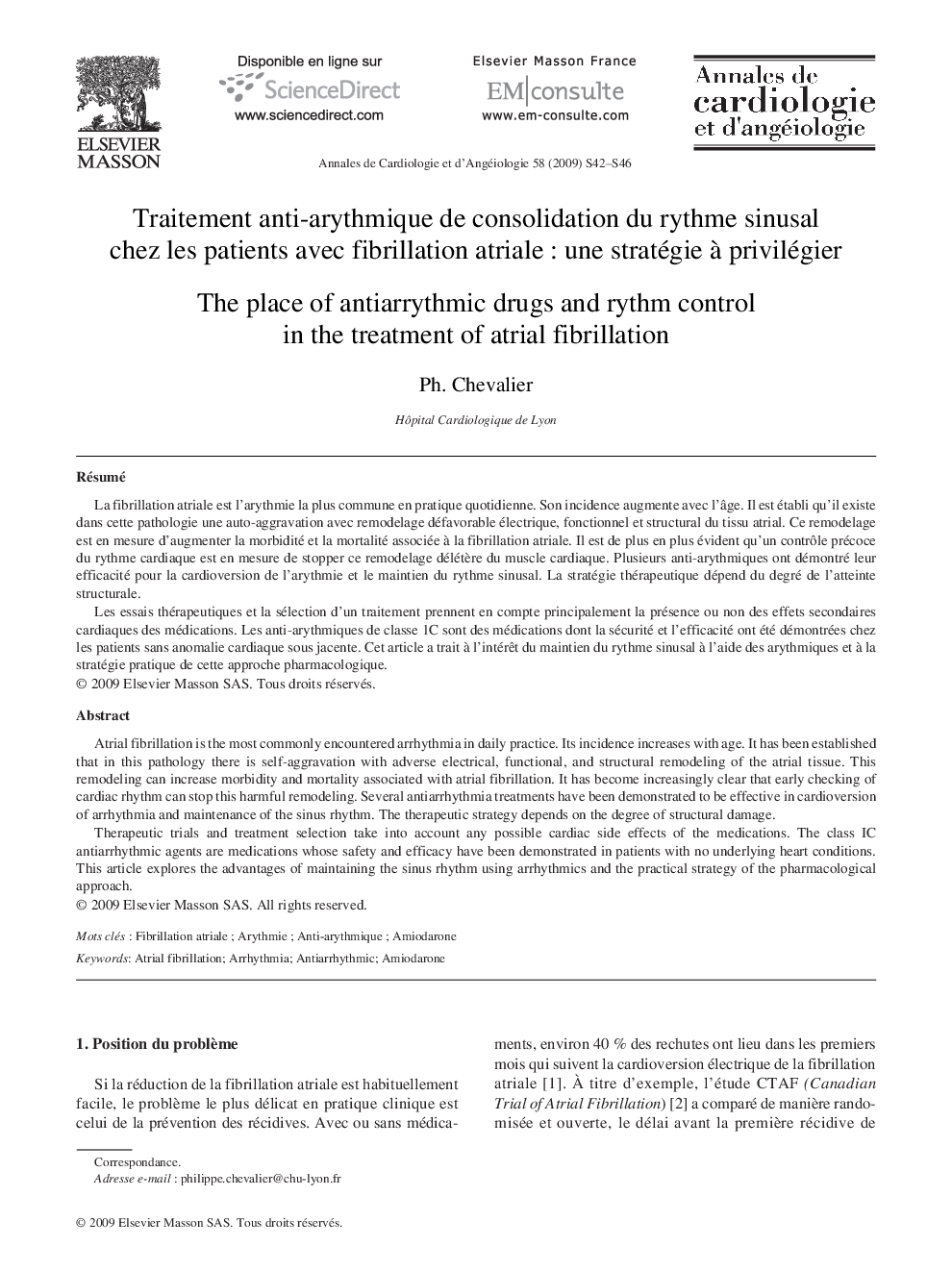| Article ID | Journal | Published Year | Pages | File Type |
|---|---|---|---|---|
| 2869538 | Annales de Cardiologie et d'Angéiologie | 2009 | 5 Pages |
RésuméLa fibrillation atriale est l’arythmie la plus commune en pratique quotidienne. Son incidence augmente avec l’âge. Il est établi qu’il existe dans cette pathologie une auto-aggravation avec remodelage défavorable électrique, fonctionnel et structural du tissu atrial. Ce remodelage est en mesure d’augmenter la morbidité et la mortalité associée à la fibrillation atriale. Il est de plus en plus évident qu’un contrôle précoce du rythme cardiaque est en mesure de stopper ce remodelage délétère du muscle cardiaque. Plusieurs anti-arythmiques ont démontré leur efficacité pour la cardioversion de l’arythmie et le maintien du rythme sinusal. La stratégie thérapeutique dépend du degré de l’atteinte structurale.Les essais thérapeutiques et la sélection d’un traitement prennent en compte principalement la présence ou non des effets secondaires cardiaques des médications. Les anti-arythmiques de classe 1C sont des médications dont la sécurité et l’efficacité ont été démontrées chez les patients sans anomalie cardiaque sous jacente. Cet article a trait à l’intérêt du maintien du rythme sinusal à l’aide des arythmiques et à la stratégie pratique de cette approche pharmacologique.
Atrial fibrillation is the most commonly encountered arrhythmia in daily practice. Its incidence increases with age. It has been established that in this pathology there is self-aggravation with adverse electrical, functional, and structural remodeling of the atrial tissue. This remodeling can increase morbidity and mortality associated with atrial fibrillation. It has become increasingly clear that early checking of cardiac rhythm can stop this harmful remodeling. Several antiarrhythmia treatments have been demonstrated to be effective in cardioversion of arrhythmia and maintenance of the sinus rhythm. The therapeutic strategy depends on the degree of structural damage.Therapeutic trials and treatment selection take into account any possible cardiac side effects of the medications. The class IC antiarrhythmic agents are medications whose safety and efficacy have been demonstrated in patients with no underlying heart conditions. This article explores the advantages of maintaining the sinus rhythm using arrhythmics and the practical strategy of the pharmacological approach.
